Treatment of a polycarbonate greenhouse in the fall, a set of mandatory measures

At the end of autumn, when the summer season comes to an end and all the grown crops have been harvested, greenhouse made of polycarbonate needs preparation for next year.
It requires mandatory processing, which is an essential condition for extending the life of the structure. Not many novice gardeners know about the need for these measures. But sometimes even experienced summer residents do not follow the basic rules of care.
That is why it would not be amiss to talk about the rules of autumn processing greenhousesmade from polycarbonate, its main stages, and the means used for this procedure.
Content:
- Why is it necessary to treat polycarbonate greenhouses?
- What is included in the package of activities
- Autumn processing
- Treatment of supporting structure and coating
- Soil treatment
- What to process
- How to prepare a greenhouse for winter
Why is processing necessary?
If you do not properly care for the greenhouse in the fall and do not disinfect the soil in the beds, the harmful pathogens accumulated in them over the past season will infect the seedlings planted in the new season.
Most pathogenic microflora do not lose their viability. Eg, late blight, which affects tomatoes and potatoes, remains active for 3 to 5 years, once in a favorable environment it begins to develop again.
Failure to comply with crop rotation conditions contributes to the depletion of the greenhouse substrate. Toxic substances and pathogenic microflora accumulate in it.
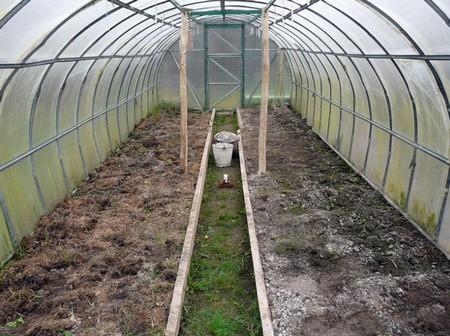
Carrying out autumn treatment of the greenhouse and disinfection of the greenhouse substrate is an excellent prevention that saves from many different diseases that affect vegetable crops:
- late blight,
- fusarium,
- top rot,
- blackleg,
- brown spot on tomatoes.
Treating greenhouse frames in the autumn can be called the most effective way to combat harmful insects. By the onset of winter, adults insects climb inside the greenhouse substrate. This helps them survive winter frosts well.
Digging up the beds or replacing some of the soil will help prevent the appearance of insects that harm greenhouse plants. Fumigation with sulfur bombs will help combat the proliferation of spider mites.
What is included in the package of activities
Autumn preparation greenhouses should be done when the outside air temperature is 10-15 degrees above zero. Correct preventive measures and high-quality care of the substrate are the key to success.
All these manipulations include:
- general cleaning;
- treating surfaces with a disinfectant solution;
- repair measures to eliminate mechanical damage to the structure frame;
- autumn processing of greenhouse substrate;
- strengthening the structure;
- insulation, lighting and heating, if necessary.
Autumn processing
Having completed the harvesting of the grown crop, it is necessary to process the greenhouses. The first step is to remove all materials that were used additionally: pegs, ropes.Take out trellises and shelving to clean and disinfect them.
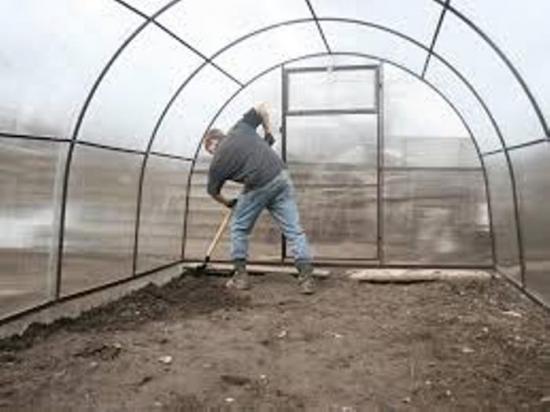
If the design of the greenhouse provides for this, remove its covering, because pathogenic microflora accumulates on its surface.
To begin preparing the substrate for greenhouse beds, you need to remove all residues of plant origin from them: stems, tops, seeds, roots. If the plants have been susceptible to diseases this season, it is necessary to destroy everything and use healthy greenery to fill the pit with it. compost.
Important!!! The crops that were used to make it cannot be grown on compost.
Everything that has been used must be disinfected: equipment, shelving, twine, stakes, trellises. To perform this procedure, it is recommended to use the drug Fitosporin; it can be replaced with a dark burgundy solution of manganese. It is necessary to soak all equipment for an hour, then rinse, dry and fold for storage.
Treatment of supporting structure and coating
It is necessary to carefully inspect the frame to identify mechanical damage and areas affected by rust. Clean the rusted areas with sandpaper and paint over them. Repair any mechanical damage found.
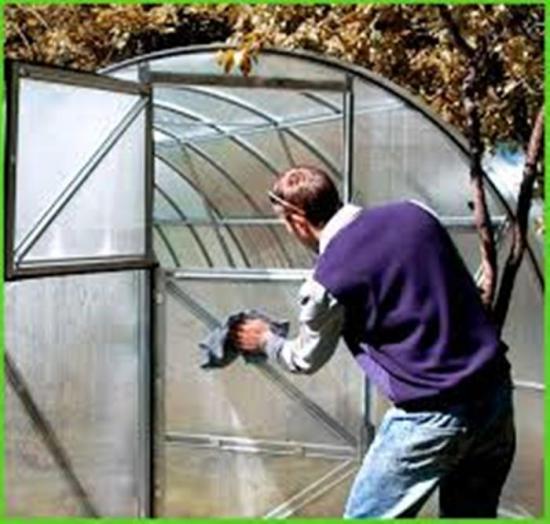
The supporting structure must be completely washed with warm water and soap. The greenhouse structure must be washed inside and out with soapy water. It must be removed by wiping all surfaces again with a damp cloth. You need to make sure that the soap does not get into the substrate. Process polycarbonate with non-abrasive substances, using rags or foam rubber so as not to damage the coating.
Soil treatment
Due to non-compliance with crop rotation rules in greenhouses it is necessary to replace the substrate or disinfect it. When replacing it, it is necessary to remove a layer of about 7-9 centimeters from the beds and fill its place with other healthy soil.
After completing this procedure, you need to add organic fertilizers and carefully dig up the beds. This is done for mixing fertilizers, old and new substrate. During spring preparation, you can only use organic matter that has been well rotted.
Important!!! The substrate removed from the greenhouse beds must be placed in stacks on the edge of the land plot and treated with bleach. Greenhouse soil should be poured out in layers 15-20 centimeters high, and lime should be poured between layers at the rate of 250 grams per square meter.
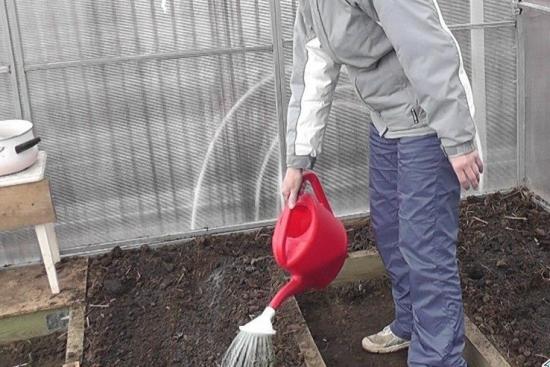
In the summer, it is necessary to dig up the stacks that were frozen in winter and leave them for another winter. And with the onset of next spring, this land can be used again in the greenhouse.
In the absence of diseases and harmful insects, the soil does not need to be replaced. In this case, for prevention, it must be dug up in the fall and disinfected. This will kill the insect larvae.
You can treat the soil in a greenhouse in the fall:
- solution of iron sulfate 3%;
- copper sulfate solution;
- bleach solution;
- pour boiling water over the soil.
Important!!! It is possible to disinfect the soil in a greenhouse with chemicals only during autumn treatment. They cannot be used in the spring.
If the plants are in greenhouse often got sick due to infection or harmful insects during autumn treatment, the substrate must be treated with a 2.5% formaldehyde solution. This method is not safe, but it is effective.It will help destroy not only larvae, but also insect eggs.
When resorting to this method of disinfection, wear protective equipment. Irrigate the beds with formaldehyde at the rate of 1 liter of solution per square meter of substrate.
Upon completion of the procedure, close the door and leave the room closed for 5-10 days. During this time, the drug will have maximum impact on pests and pathogenic microflora. Then the structure needs to be ventilated, fertilized, fertilized, and funds added to improve its structure.
What to process
Autumn activities to disinfect the greenhouse are completed with the use of chemical or biological agents. We must not forget that not every drug is equally good for both spring and autumn treatment.
How can you disinfect a polycarbonate greenhouse:
- fumigation with sulfur bombs;
- Irrigate with a solution of copper sulfate;
- fumigated with cuttings sulfur;
- pollinate with bleach.
Important!!! You cannot fumigate a greenhouse if its structure is made using galvanized steel.
Sulfur dioxide, which is released when the bomb burns, accelerates corrosion processes in the metal. Similar products can be used to fumigate greenhouses with wooden or painted frames.
Sulfur checkers
When using this method of disinfection, be sure to use gloves, a respirator or gas mask, and goggles. This is necessary because the gas released when the bomb burns is poisonous. Before carrying out the procedure, it is necessary to close all cracks, doors and transoms.

Six hundred grams of the substance are needed to treat 10 cubic meters of room.The checkers need to be evenly placed around the perimeter on special stands made of metal or stone and set on fire. You need to set fire from the side that is farthest from the entrance. To avoid poisoning, you must leave the greenhouse immediately.
Cutting sulfur
It is also necessary to use protective equipment, and the greenhouse must also be completely sealed.
To process 10 cubic meters, you need to use 1 kilogram of sulfur cuttings, metal sheets, basins or something like that. Mix crushed sulfur with the same amount of charcoal. Place the resulting mixture on metal sheets placed in basins and distribute them evenly over the entire area of the greenhouse. It must be left immediately after the mixture is set on fire.
The building where cleaning was carried out using fumigation can be visited only after 5-7 days. It needs to be ventilated for another 2-3 weeks. You cannot work there at this time. This procedure disinfects not only the structure, but also the greenhouse substrate.
Bleaching powder
Autumn and spring disinfection can be done using bleach. To prepare the solution you will need 10 liters of water and 400 grams of lime. Mix the resulting solution thoroughly and let it brew for 4 hours.
The finished solution needs to be sprayed onto the structure and soil. After completing the treatment, the greenhouse should be closed for 1-2 days and then ventilated. This product is perfect for disinfecting equipment.
Copper sulfate
A solution of copper sulfate is an excellent remedy that will help disinfect a greenhouse, both in spring and autumn.

If the plants have not been sick this season, you will need 75 grams of the substance, and if an outbreak of the disease has been observed, the amount of copper sulfate for preparing the solution must be doubled - 150 grams.
Dilute the required amount of the active substance in 10 liters of water and use a spray bottle to spray all surfaces of the building.
How to prepare a greenhouse for winter
After autumn treatment greenhouse made of polycarbonate does not need to be disassembled at all. At the same time, care must be taken to ensure that it survives the winter.

It is necessary to install several T-shaped supports inside the building, which will protect its roof from possible overloads with snow.
It is best to install supports on a hard surface, this will prevent them from sinking into the ground. A frame reinforced in this way will help preserve the structure in winter.
We will learn in more detail how to properly treat a greenhouse and prepare it for winter by watching the video:

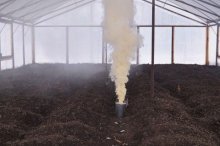

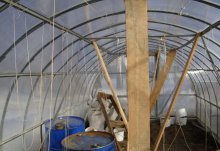
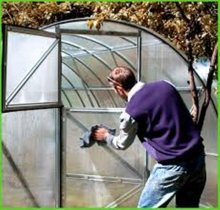
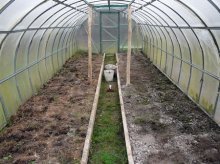
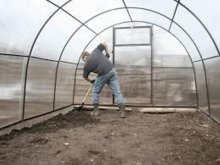
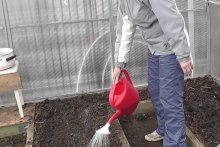
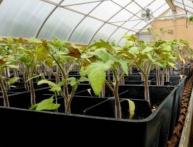




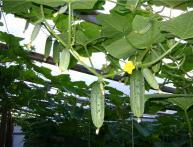
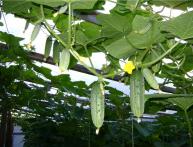

Comments
We must treat it not only against pests of tomatoes, peppers and cucumbers, but also against ants, wireworms and snails. It is enough to do this once a year in spring or autumn.